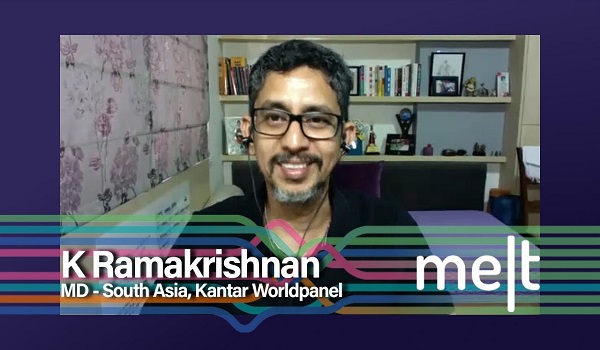According to the latest Kantar report, Indian consumers are filling their grocery baskets with more products and larger pack sizes, signaling a return in shopper confidence. Though the number of shopping trips remained steady at 156 per person in FY25—roughly once every two days—the number of FMCG packs purchased rose 13% to 226, and average pack sizes increased by 16%.
This trend reflects a gradual premiumisation and a tilt toward value-buying. “We’re witnessing a moderate yet consistent recovery in consumption, especially in urban markets. Assuming favorable macroeconomic conditions, rural demand could see a rebound in the latter half of the year,” said K. Ramakrishnan, MD, South Asia, Worldpanel Division at Kantar.
However, the FMCG industry faced headwinds in the January-March 2025 quarter. Volume sales grew by just 3.5%—the slowest pace since March 2023—compared to 5.5% in the same period last year. Unbranded products outpaced branded ones, posting a robust 6.1% growth, compared to 3.9% growth in the broader branded market and just 3.6% among 22 listed FMCG companies tracked.
Saugata Gupta, MD at Marico, highlighted stronger traction among unlisted players, regional brands, and D2C companies. “Many of these players aren’t captured in headline data, but they’re contributing to overall demand resilience,” he said during an earnings call.
Despite inflationary stress and high rental costs, urban demand showed signs of recovery. Industry leaders are cautiously optimistic. Varun Berry, Vice Chairman of Britannia, noted: “The recovery won’t be sharp, but we expect this gradual trend to continue into next year.”
Company-specific performance during Q4 FY25 reflected mixed fortunes. Hindustan Unilever posted a 2% volume growth, while Godrej Consumer Products reported 4%, Tata Consumer 6%, and Marico led with 7%.
The Kantar study also revealed hyperlocal consumption trends. South Delhi households consumed 240 kg of FMCG goods annually—double the national average. In West Delhi, the annual FMCG spend was ₹39,325 per household, the highest in India.
In Mumbai, average households made 135 FMCG shopping trips annually, but households in the city’s slum clusters—like Dharavi and Bandra East—topped the list with 233 trips a year, albeit with the smallest purchase size per visit at just 541 grams.
Bengaluru emerged as the most premium FMCG market. Southwest Bengaluru localities such as RR Nagar and Mysore Road recorded the highest spend at ₹227 per kg, with the citywide average spend standing at ₹211, significantly ahead of other metros.
As FMCG companies brace for evolving consumption patterns, the Kantar report underlines a pivotal shift in consumer behavior: fewer shopping trips, larger baskets, and growing urban premiumisation—all pointing to a cautious but emerging recovery.


